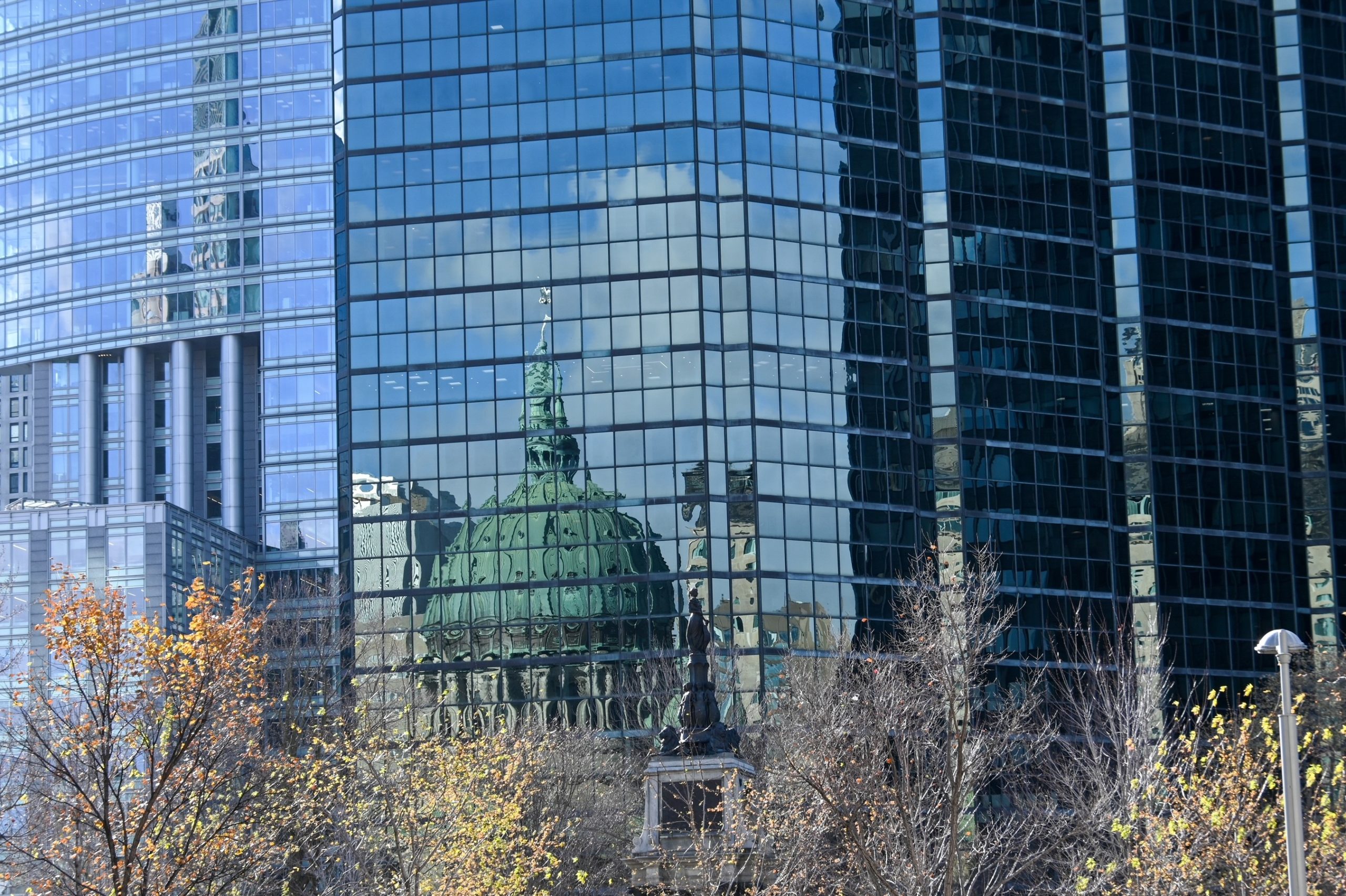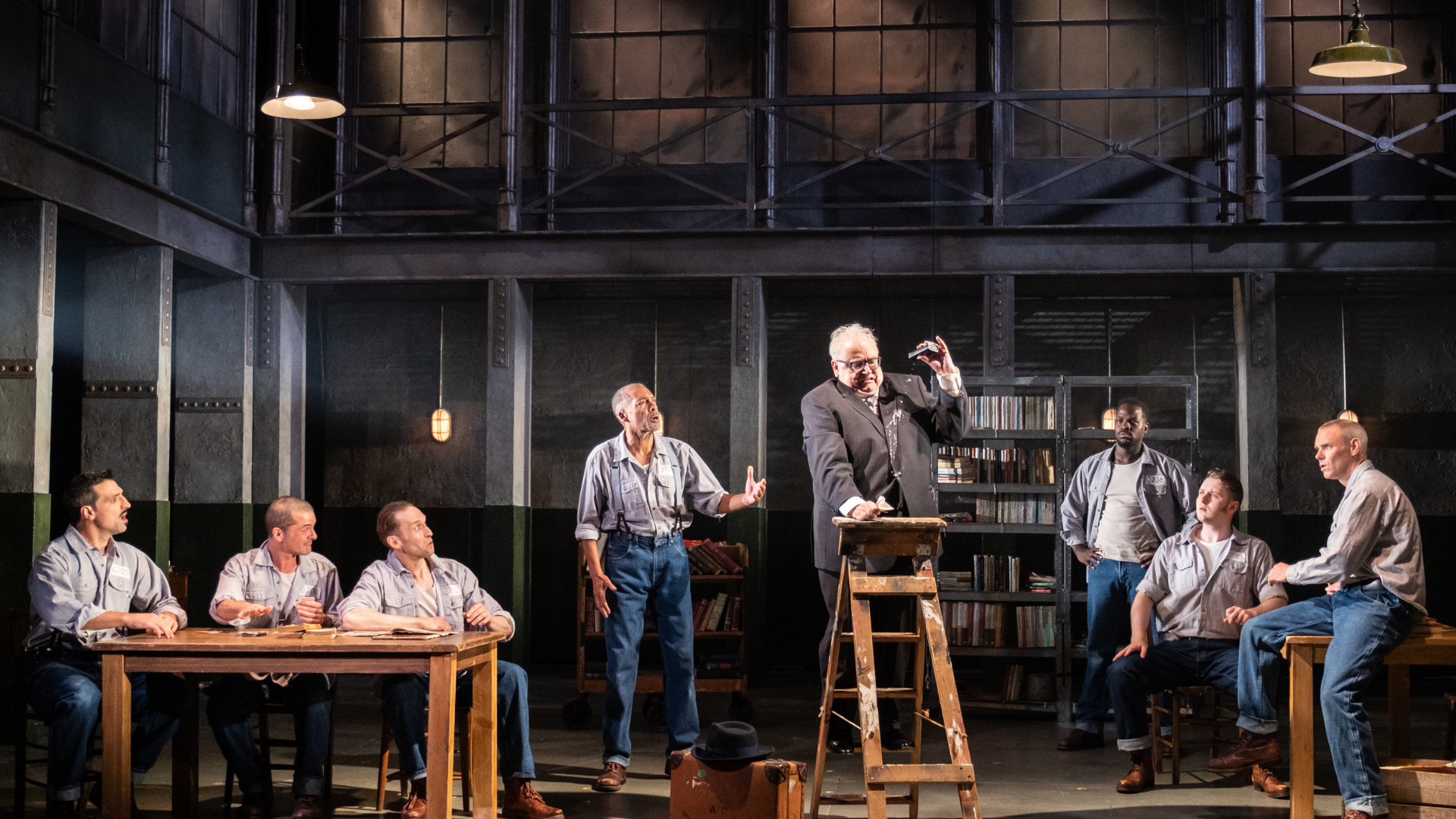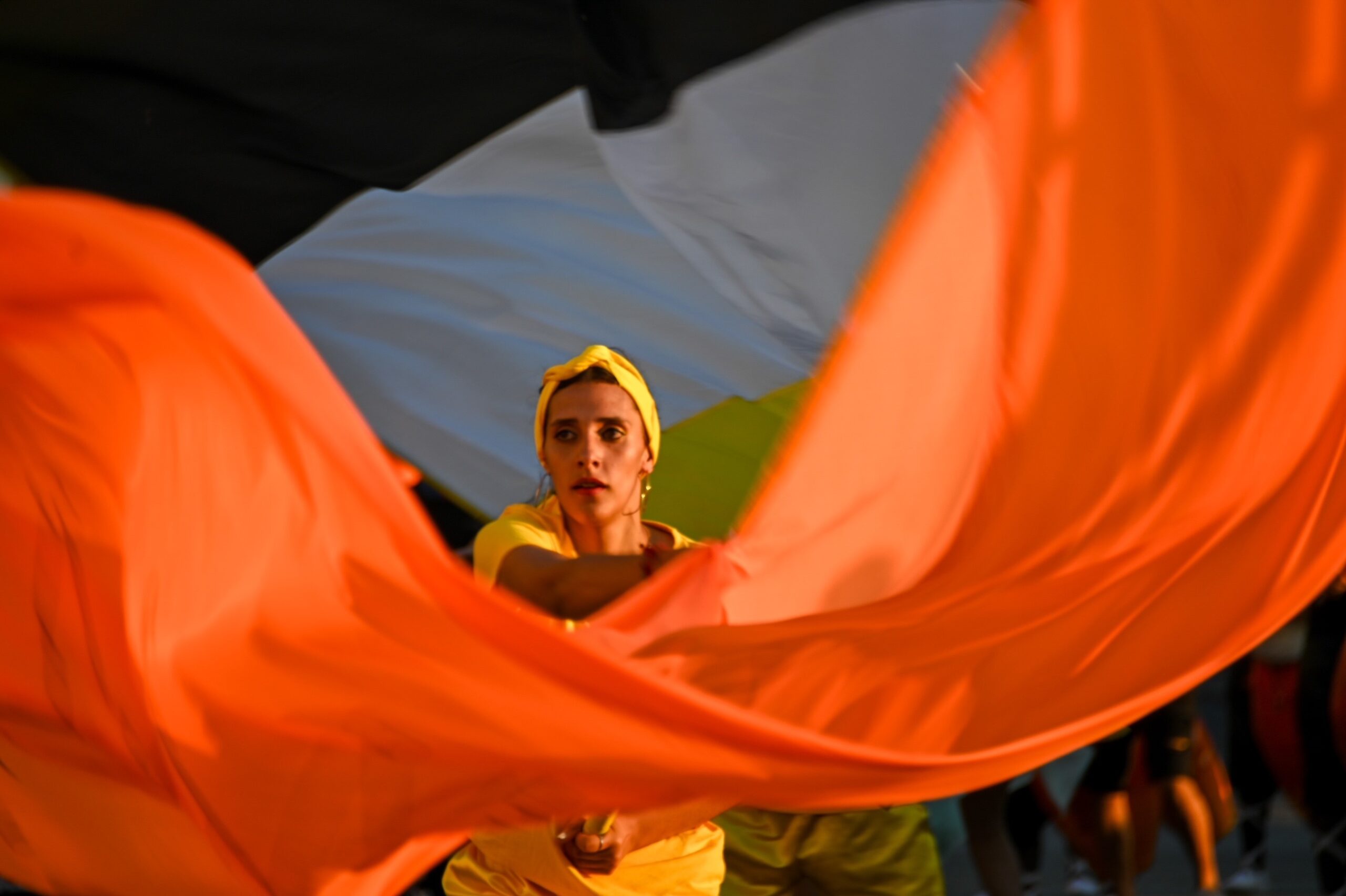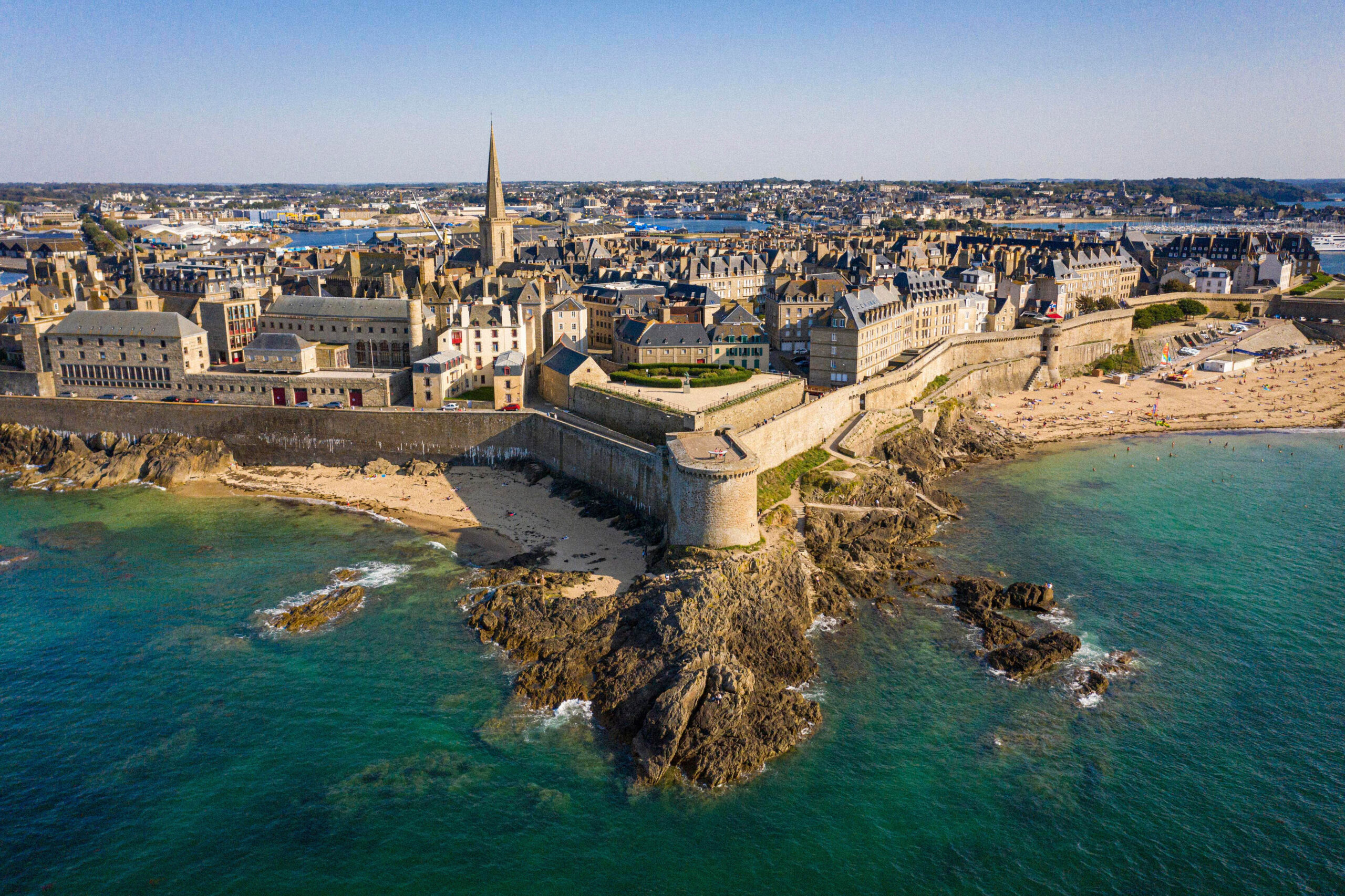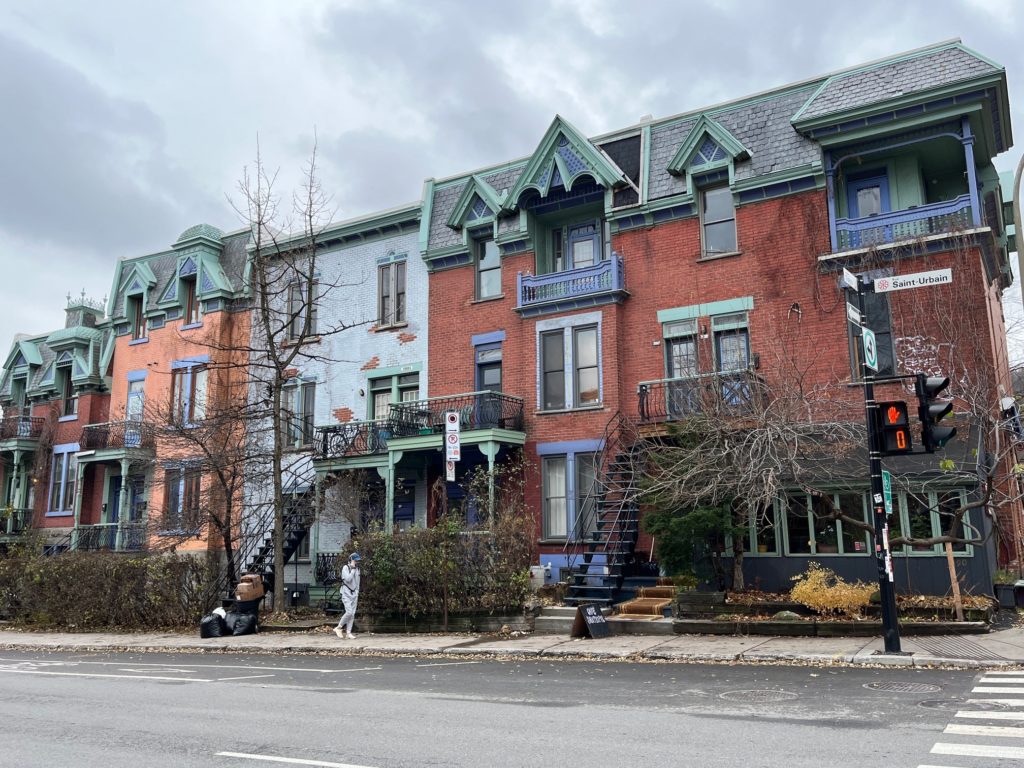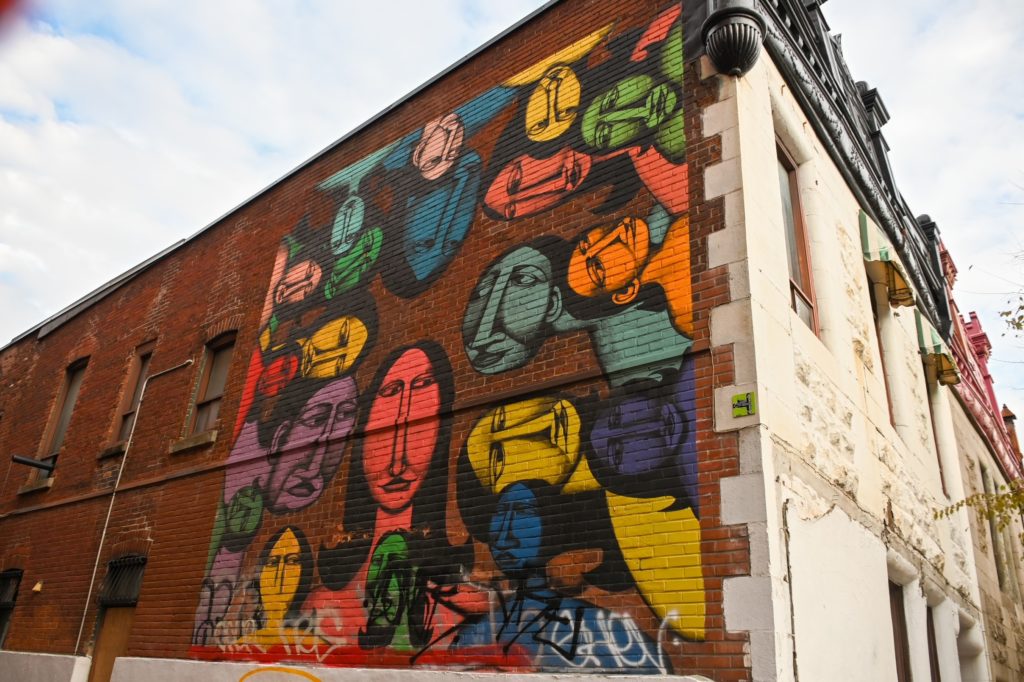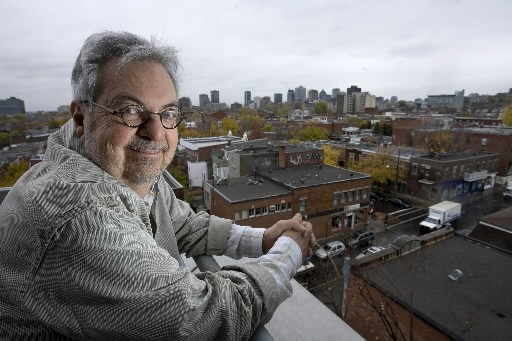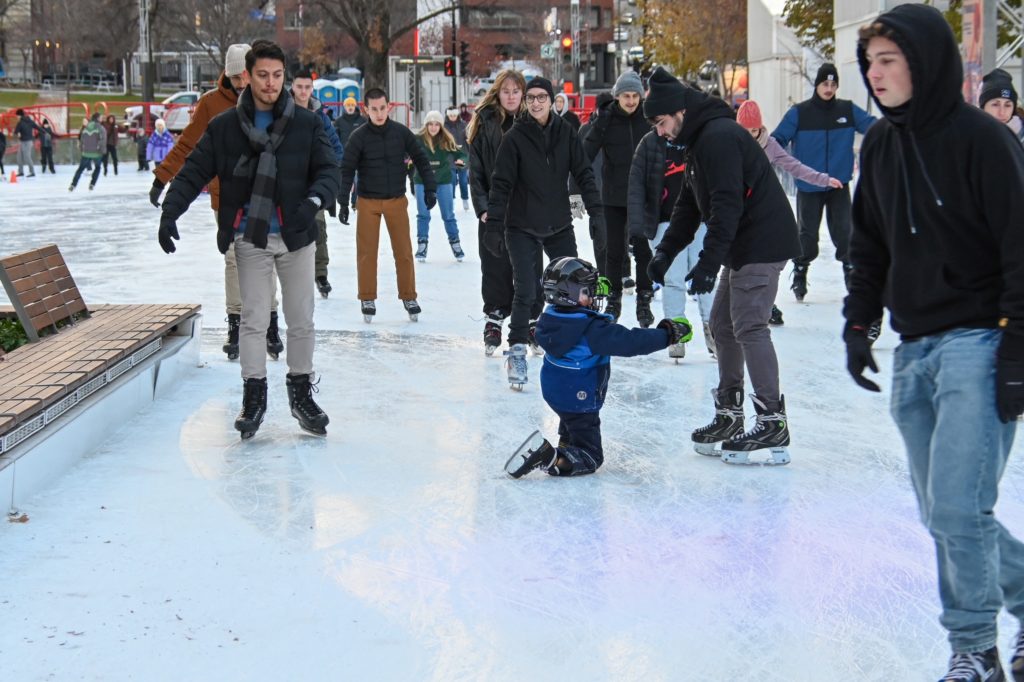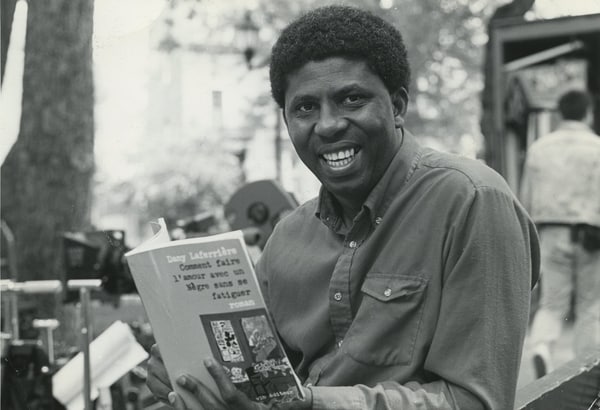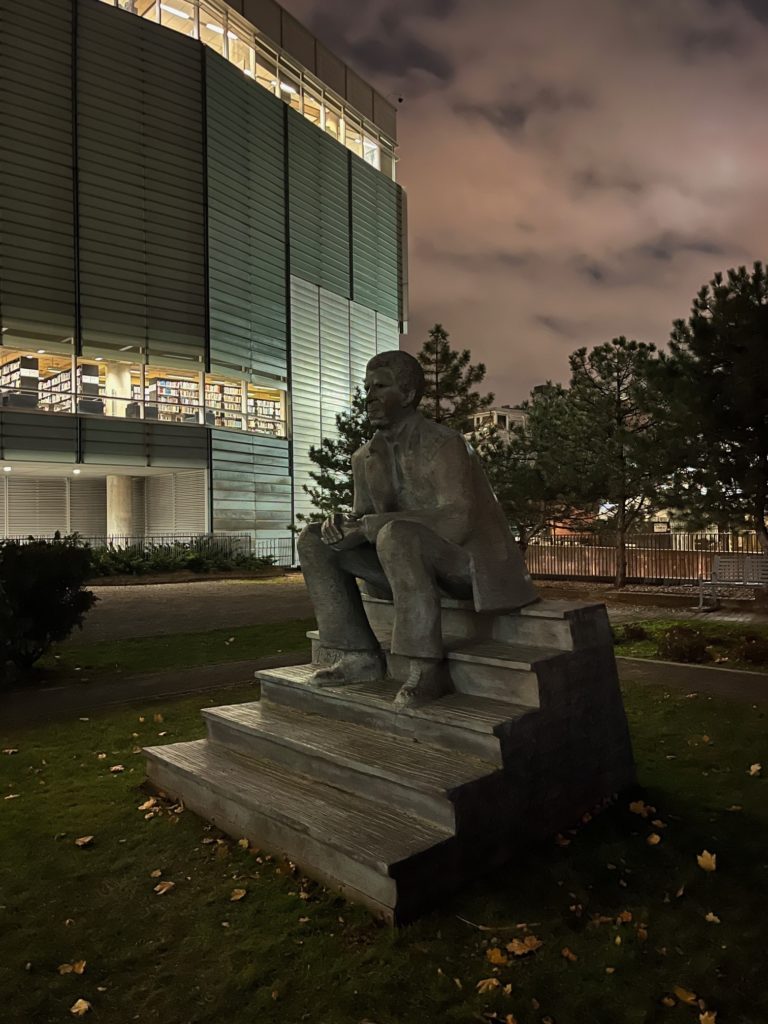We set off from our hotel on Philipps Square towards McGill University. After an initial exploration of the campus, we climbed the stairs to the viewpoint in front of the Chalet du Mont-Royal. In late November, at the top of this hill overlooking the French-Canadian metropolis, a few snowflakes greeted us. We took a few photos to celebrate our long weekend of family and friends, and enjoyed the view that stretched all the way to the St. Lawrence River. But my eye was also drawn to a huge mural on a building reproducing Leonard Cohen’s face and famous hat.
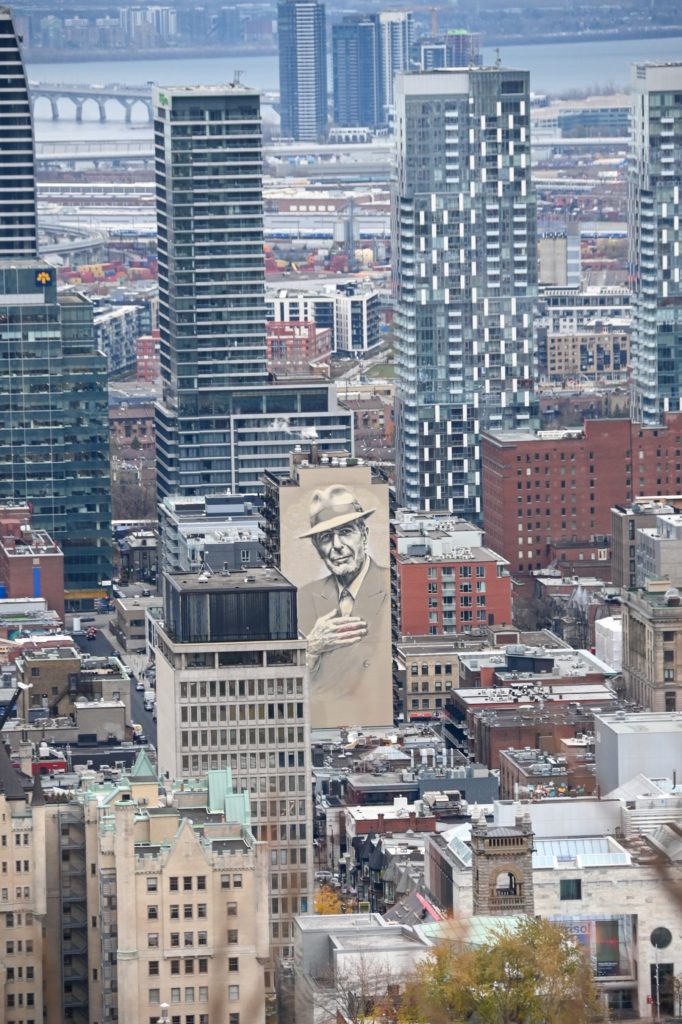
A reminder that Montreal, America’s largest French-speaking city, is also a bilingual city, and the birthplace of, in my opinion. the greatest English-language songwriter of all time. One of Leonard Cohen’s most famous songs, “Suzanne”, evokes a probably platonic or dreamy love that leads the singer to the St. Lawrence River and the Notre-Dame-de-Bon-Secours chapel in the port.
« Suzanne takes you down to her place near the river
You can hear the boats go by, you can spend the night beside her
(…)
Now, Suzanne takes your hand and she leads you to the river
She’s wearing rags and feathers from Salvation Army counters
And the sun pours down like honey on our lady of the harbor
(…)”
Although he was born in the more upscale English-speaking neighborhood of Westmount and studied at McGill, it was on the Plateau Mont-Royal on the Main, the Bouvard Saint-Laurent, near Parc du Portugal, that Cohen bought a house, which he occupied on his returns to his native city.
It was to the same Plateau district that we walked down from Mont-Royal. We strolled around, shopped at vintage clothing stores and warmed up with hot chocolate and “merveilleux” cakes. We returned in the evening to meet up with friends and cousins.
The Plateau-Mont-Royal may now be a trendy place, but it was and still is a working-class neighborhood. In his novel “La Grosse Femme d’à côté est enceinte (The Fat Woman Next Door is Pregnant)”, Michel Tremblay recounts the day of May 2, 1942, in and around Rue Fabre. The fat woman was seven months pregnant and had to stay in bed while the rest of her in-laws enjoyed one of the first days of spring. She’s not the only one expecting a child: there are seven on the street, perhaps because the fathers can escape military conscription. At the time, Quebecers weren’t too keen on the idea of defending England, which had subjugated them, and France, which never ceased to look down on them.
Neighbors watch and gossip, children play with Duplessis, the cat, which is attacked by a dog. On this Saturday, the men drink, the women shop, and all gather in Parc Lafontaine at sunset, before gathering for a colorful dinner. Michel Tremblay’s novel is both funny and sensitive, and offers an excellent introduction, thanks to its lively dialogues, to the richness of French as it is spoken in Quebec. This is the first volume in the “Chroniques du Plateau-Mont-Royal” series.
Still on the Plateau, around the Carré Saint-Louis, but a little over forty years later, Vieux and Bouba, two young blacks, one a jazz fan, the other passionate about literature, lure many young white girls, including fresh McGill students, into their beds. “Comment faire l’amour avec un Nègre sans se fatiguer (How to Make Love to a Negro Without Getting Tired)” is Dany Laferrière’s first novel, written in the years following his arrival in Montreal after his exile from Haiti.
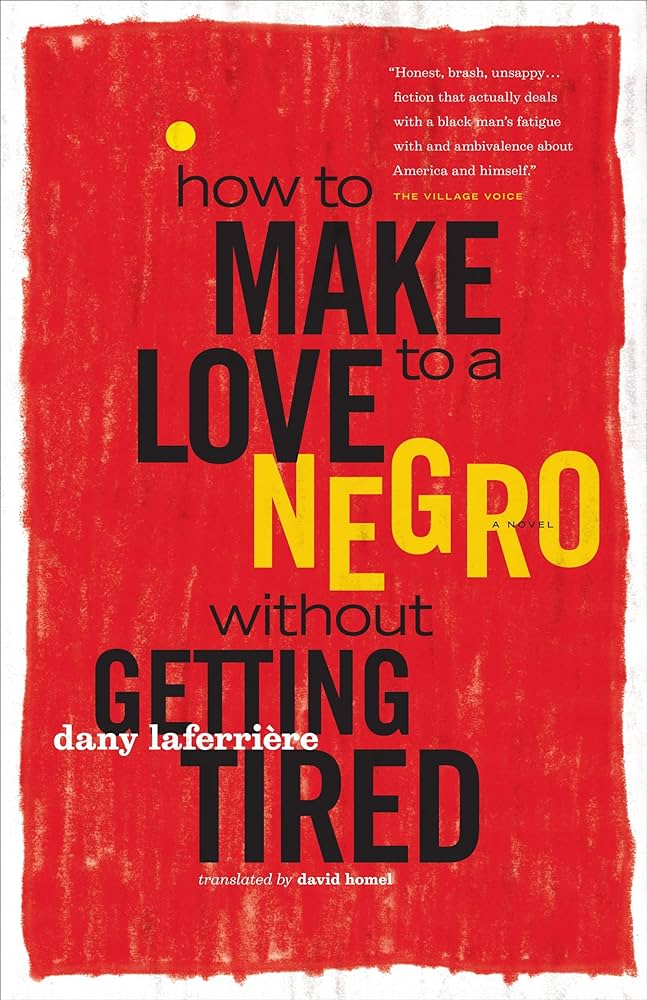
I had already tasted the writer’s tender yet biting pen in my article on Haiti. Reading his first work, you can see just how far the young Port-au-Prince-born immigrant has come: today, he sits under the dome of the Académie Française in Paris and his statue stands in the gardens of the Bibliothèque Nationale du Québec, a few blocks from the Carré Saint-Louis. Beyond its provocative title, the novel offers a funny and ferocious window on Quebec society in the ’80s, its inequalities, its prejudices, but also about the life and culture that continue to teem and reinvent themselves on the Plateau Mont-Royal.
